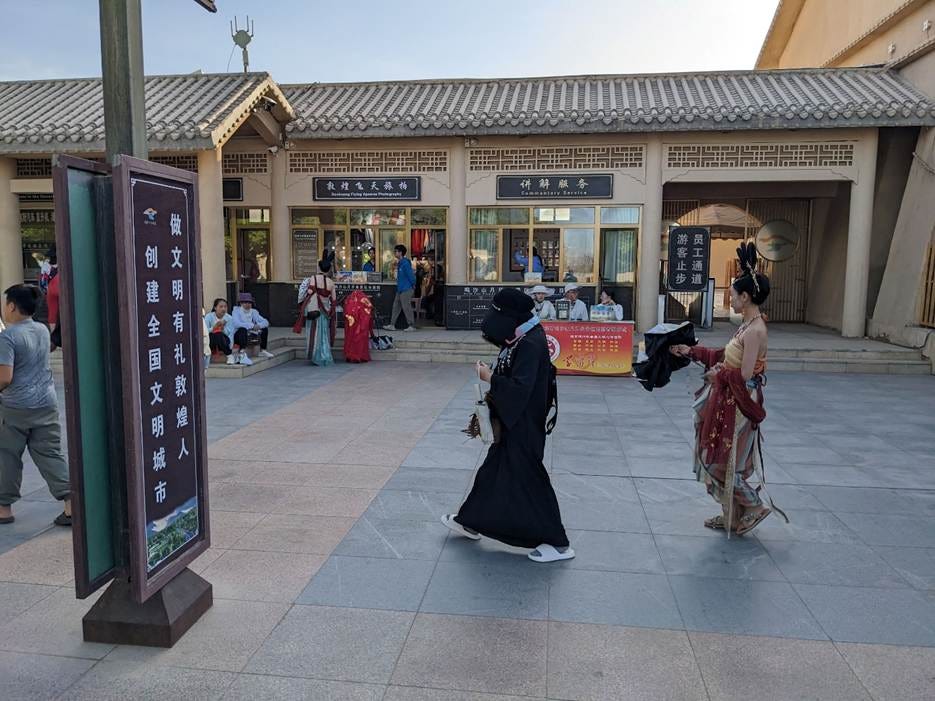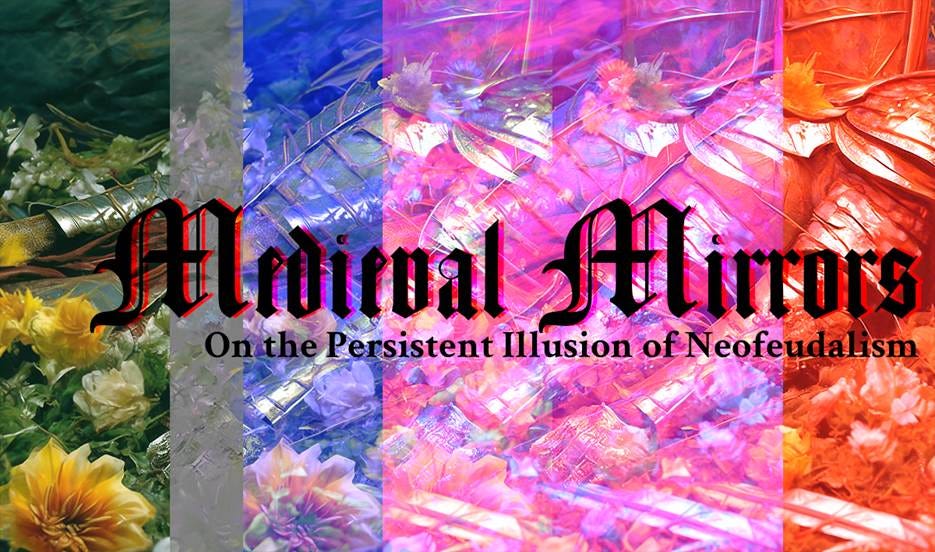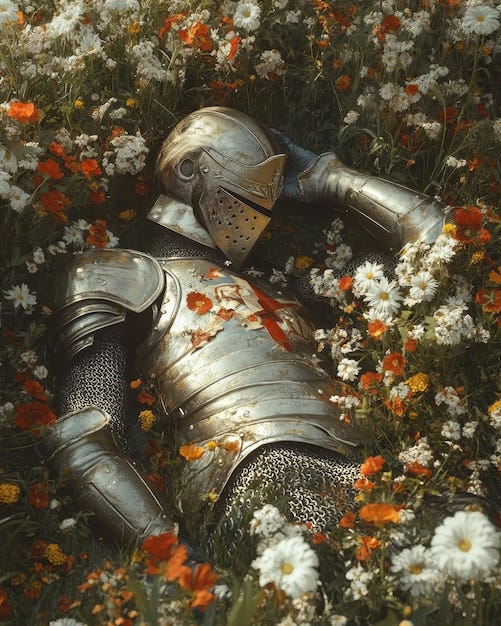What follows is an extremely rough, extremely partial draft of a much longer piece on the recent return of the “Neofeudalism” hypothesis. It is in no way a finished article and much of the language and logic remains unpolished, so please be sparing in any citations. If you have an outlet and are interested in publishing the piece in part or in whole, please get in touch — this might encourage me to actually finish it. Overall, the piece is intended to be divided into two rough sections: one framing the overall issue, examining the contours of contemporary theories of neofeudalism, and providing comparative historical context, and a second exploring the “rational kernel” of the theory by examining the real trends generating these “feudal” themes within folk politics. This last section would also offer an opportunity to analyze in more theoretical detail the nature of “rents” within capitalism, the Ricardian error of equating “finance” with speculative or unproductive rentier activity, the link between asset and commodities bubbles and actual ground rents, the role of landlords and landlord-like entities within the class structure of capitalist society, the growing prominence and power of the state (this latter point perhaps addressed through a critical engagement with theories of “state-capitalism”).
Above all, I hoped to detail the general confusion caused by the fact that the communist critique of political economy understands all flows of profit as ultimately “appropriated” forms of value drawn down from the total social surplus via the market (alongside state-led reappropriation in the form of subsidies, preferential financing, etc.), rather than “earned” sums produced directly in-house. Although this appropriation is structured by the value composition of individual firms and only some firms are actually adding to that total social pool of surplus value, even the profits of these “productive” firms are not the gleaned leftovers of the value they produce in-house. This is simply how they appear in corporate accounts, where profit is a derivative of the “value-added,” calculated as a residual after costs. Rents, on the other hand, are a specific form of appropriation tied, in the last instance, to control over some “ground” of production – traditionally understood in terms of agricultural land but also applying to other natural resource industries and the so-called “natural monopolies,” as well as taxation and other forms of non-market appropriation. Elaborating this argument in detail obviously requires an extended engagement with both the many-firms model established in Marx’s Economic Manuscript of 1864-65 (the raw material used by Engels in crafting Capital, Volume III, released twenty years later, in 1883), and the firm-taken-as-society model established in Volume I.
As this structure slowly shaped itself in the process of writing the first portion, I soon realized that this would be a larger project than initially predicted. As a result, none of that later material is included below. Although this piece was started over a year ago, time constraints and financial hardship forced me to prioritize other projects. This partial draft has sat on the backburner for many months, periodically edited and expanded in small bursts. After the release of Jodi Dean’s book length exposition on the topic earlier this year, however, even much of the initial material now needs further revisions. Hopefully I’ll have time to return to the topic in more detail some time in the future and finally begin drafting that final, theoretical component (in my mind, the real meat of the piece). For now, I figure there’s no reason to let the earlier material languish on my hard drive, as it has some observations and historical context that I’m sure some readers will find useful. The material below covers most of the first section described above, offering an overview of the issue and providing historical context, though you’ll notice that the manuscript breaks off suddenly at the end. I’ve made almost no additional edits to this version from when I last looked at it, other than pulling up some graphics to illustrate the post.
We find ourselves within a medieval moment. The phenomenon is most obvious within the cultural sphere. Aesthetic trends loosely modelled on a particular image of the European Middle Ages are booming, particularly among rapidly radicalizing youth, and have now come to form a distinct subcultural stratum beneath the more mainstream nostalgia for Nu Metal, Frutiger Aero, and all things Y2K. Ever since the plague ravaged the world, once-marginal moodboard internet aesthetics such as “goblincore,” “knightcore,” and “castlecore” have been slowly entering the broader cultural consciousness. Goblincore was mainstreamed during the pandemic as an embrace of escapist, chaotic comfort during lockdown, evolving into a more or less official kawaii subgenre within Gen Z Maximalism. Knightcore and castlecore broke into popular consciousness somewhat more slowly, passing from the haute couture of Zendaya in chainmail at the pre-pandemic Met Gala to Chapell Roan appearing on stage at the 2024 VMAs in a full suit of armor, flanked by sword-wielding backup dancers. Now, TikTok teens don silver breastplates over black hoodies, bedroom crafters across the country harvest corduroy from Goodwill for resale at local market fairs, and internet artisans painstakingly sew together leather greaves and chainmail accessories custom-ordered on Etsy.
Nor is the trend solely limited to the West. In China, a traditional culture craze known as fugu has been growing in popularity since the late 2010s, especially among the young. On social media apps such as xiaohongshu—mostly used by the college-educated, travel-blogging middle strata—young people can be seen playing the guqin or showing off the latest flowing gowns inspired by classical Han dress. These outfits, known as hanfu, have become a major industry in and of themselves, worn for social media photo ops, casual outings, and donned for special occasions. Meanwhile, some of the country’s wealthiest and most popular livestreamers, such as Li Ziqi, have built their entire careers on depictions of rustic simplicity and artisanal crafts. Meanwhile, state resources have been poured into the revival and promotion of traditional cultural sites and the preservation of intangible cultural heritage, with medieval Silk Road outposts like Dunhuang remade into neon-lit theme parks where the average tourist can pay to ride a camel into the dunes while the fuerdai (the notorious nouveau-riche born to rich parents in the early years of the export boom) buzz overhead in rented helicopters.

Other examples proliferate across the back alleys of the collective unconscious: Dungeon Synth, an online subgenre of ambient music modelled on fantasy videogame soundtracks, is far more popular than that description would imply, with affiliated YouTube playlists receiving millions of views. Meanwhile, attendance at Renaissance Faires in North America and Europe has been increasing for at least the past decade. The largest now seeing hundreds of thousands of guests and almost all major regional festivals sell out well in advance. In China, major tourist attractions are littered with xiannu (lit. “immortal women” or “nymphs”) with expensive hairstyles and extensive makeup, wearing hanfu and even carrying plastic daggers and bows to complete the look—all rented from nearby stands that specialize in styling tourists and offer photographers for hire as well. In the US, ubiquitous “vintage resale” markets booming in almost every major city have helped to gestate the basic look and feel of the phenomenon. Resembling the model of a moving medieval fair, these pop-up markets are full of Gen Z vendors selling high-quality denim from before the phasing-out of the Multi Fibre Arrangement or rare Marlboro merch mined from the closet of a dead alcoholic. In fact, the Ridgewood-based designer who crafted Chappell Roan’s coveted chainmail gloves, Juniper Rose, ran a vintage resale Etsy shop before pivoting to become one of the trend-setting vendors of chainmail accessories and medieval corsets.
We curse the landlord, pay our tithes to the barons of the great houses, and wonder at the wrath of God as thousand-year floods wash our neighbor’s house away, thousand-year fires burn entire towns to ash, and a thousand years of tides rise at once to drown the glittering cities bursting full of sinners much like ourselves. Nonetheless, we toil, not challenging the lords or the balance sheet they worship, praying that we might at least be spared in the next of many plagues.
The fad is, essentially, a commercialization of both real and imagined artisanal acumen. But the affect is perhaps best captured by a small constellation of Instagram pages posting nothing but AI-generated images of weary, armor-laden knights lying down to die in verdant summer fields. After all, our medieval moment is not just about donning artifacts that emulate the feudal past but also narrating our own grim experience of what at least feels like an increasingly feudal present. We find ourselves alone in a bleak world of wasteful pleasure, our bodies commanded by the palatial machinations of lords we will never see, moving in rituals designed to serve arcane gods that speak only in the cryptic language of financial derivatives. Life seeps out of us paycheck by paycheck like blood onto the wildflowers, and we sink ever-so-slowly into the soft grass of a luxury that we can watch rolling under us but cannot quite feel—the splendor of the images scrolling beneath the armor of the screen. In other words, the medieval fashion seems to express some deeper social fact, simultaneously existential and economic. We curse the landlord, pay our tithes to the barons of the great houses, and wonder at the wrath of God as thousand-year floods wash our neighbor’s house away, thousand-year fires burn entire towns to ash, and a thousand years of tides rise at once to drown the glittering cities bursting full of sinners much like ourselves. Nonetheless, we toil, not challenging the lords or the balance sheet they worship, praying that we might at least be spared in the next of many plagues. And yet, in these prayers, beneath this armor, beyond these flitting images—“aesthetics,” in the purest sense—perhaps we also feel a creeping doubt. Is the world really as it seems? Or is some wizardry afoot?
Keep reading with a 7-day free trial
Subscribe to The Planetary Factory to keep reading this post and get 7 days of free access to the full post archives.




